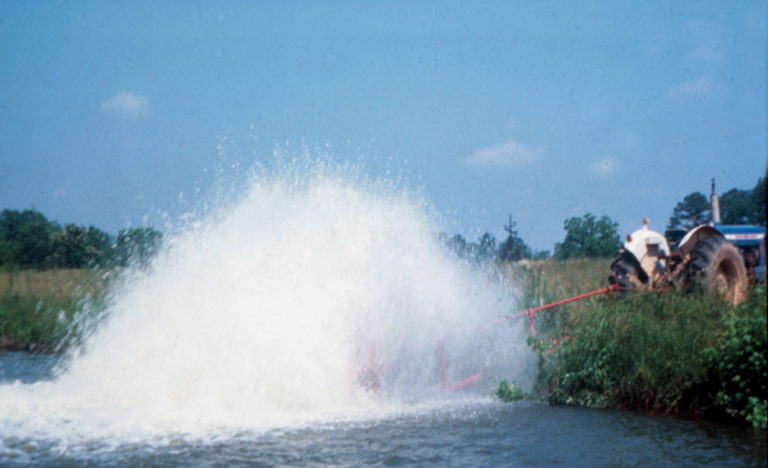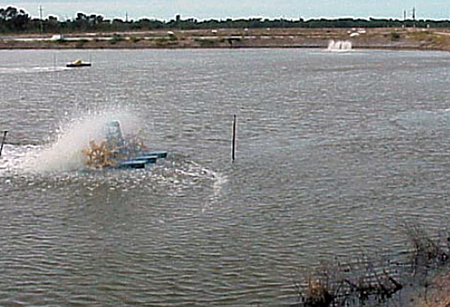
Responsibility
Regenerative blowers offer efficient, high-volume aeration
A range of motor sizes and types for regenerative blowers provides varied aquaculture applications with reliable performance, energy efficiency and minimal maintenance.
Responsibility
Various studies suggest that maintaining minimum daily dissolved oxygen concentrations above 3 mg/L in channel catfish and penaeid shrimp ponds assures better feed consumption and growth.

Responsibility
A range of motor sizes and types for regenerative blowers provides varied aquaculture applications with reliable performance, energy efficiency and minimal maintenance.

Responsibility
Ponds constructed on sandy or permeable soils are most likely to have high seepage rates. Ponds built in any soil can seep if improperlty constructed.

Responsibility
Mechanical water circulation can prevent stratification and provide more dissolved oxygen near pond bottoms. Strong water mixing can also control algae growth.

Responsibility
Even with dedicated aerators, aquaculture farms can experience stress and mortality in culture animals due to low dissolved oxygen concentrations in pond water. Simple tractor-powered aerators offer a quick and portable solution to low dissolved oxygen levels that provides strong emergency aeration and water movement.

Responsibility
Emergency aeration with tractor-powered paddlewheels allowed U.S. catfish farmers to increase feeding and stocking rates, and double production.

Responsibility
For shrimp growers committed to using mechanical aeration and intensive culture densities, electrical power consumption is a major cost.

Responsibility
A benefit of aeration is the mixing of pond water. Similar to biotechnological reactors, microbial processes are more effective in mixed pond water.

Responsibility
Appropriate site selection, design and management are fundamental factors that contribute to the success or failure of a shrimp farm.